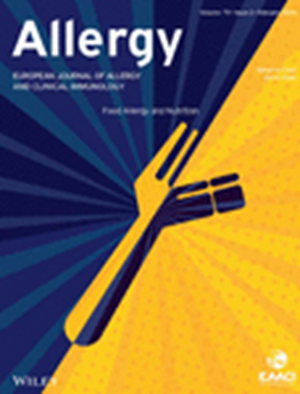Biomarkers for a less invasive strategy to predict children with eosinophilic esophagitis
Abstract
Background
Noninvasive biomarkers for diagnosing and monitoring eosinophilic esophagitis (EoE) are currently lacking. This study evaluates 20 biomarkers in serum and saliva, aiming to assess their diagnostic potential in pediatric EoE patients and healthy individuals.
Methods
Blood and saliva from children undergoing upper endoscopy were analyzed for biomarkers, including absolute eosinophil count (AEC), eosinophil-derived neurotoxin (EDN), total and specific IgG4-antibodies (sIgG4), specific IgE-antibodies (sIgE) and 15-hydroxyeicosatetraenoic acid (15(S)-HETE). Some patients participated twice, forming a longitudinal cohort. The ability to use the biomarkers to predict the EoE diagnosis was evaluated.
Results
Analysis from 105 children divided into active EoE, remission, and healthy, revealed elevated levels of serum biomarkers (AEC, EDN, 15(S)-HETE, sIgG4, and sIgE) in active EoE compared to healthy individuals. A combination of biomarkers (AEC, EDN, sIgE to egg white and wheat) and symptoms showed an AUC of 0.92 in distinguishing between the three groups. We further showed that optimal cutoff values for these biomarkers could discriminate between active EoE and healthy with a sensitivity of 88% and a specificity of 100% in distinguishing EoE (active and in remission) from healthy. Longitudinally, levels of EDN, sIgG4 to Bos d 4, Bos d 5, Bos d 8, gliadin, and birch, and sIgE to milk decreased in patients progressing from active EoE to remission (p <.05).
Conclusions
This study identified novel biomarkers associated with EoE and proposes a panel, together with symptoms, for effective discrimination between active EoE, EoE in remission, and healthy individuals. The findings may contribute to a less invasive diagnostic method and may be a potential surveillance tool for pediatric EoE patients.


 求助内容:
求助内容: 应助结果提醒方式:
应助结果提醒方式:


